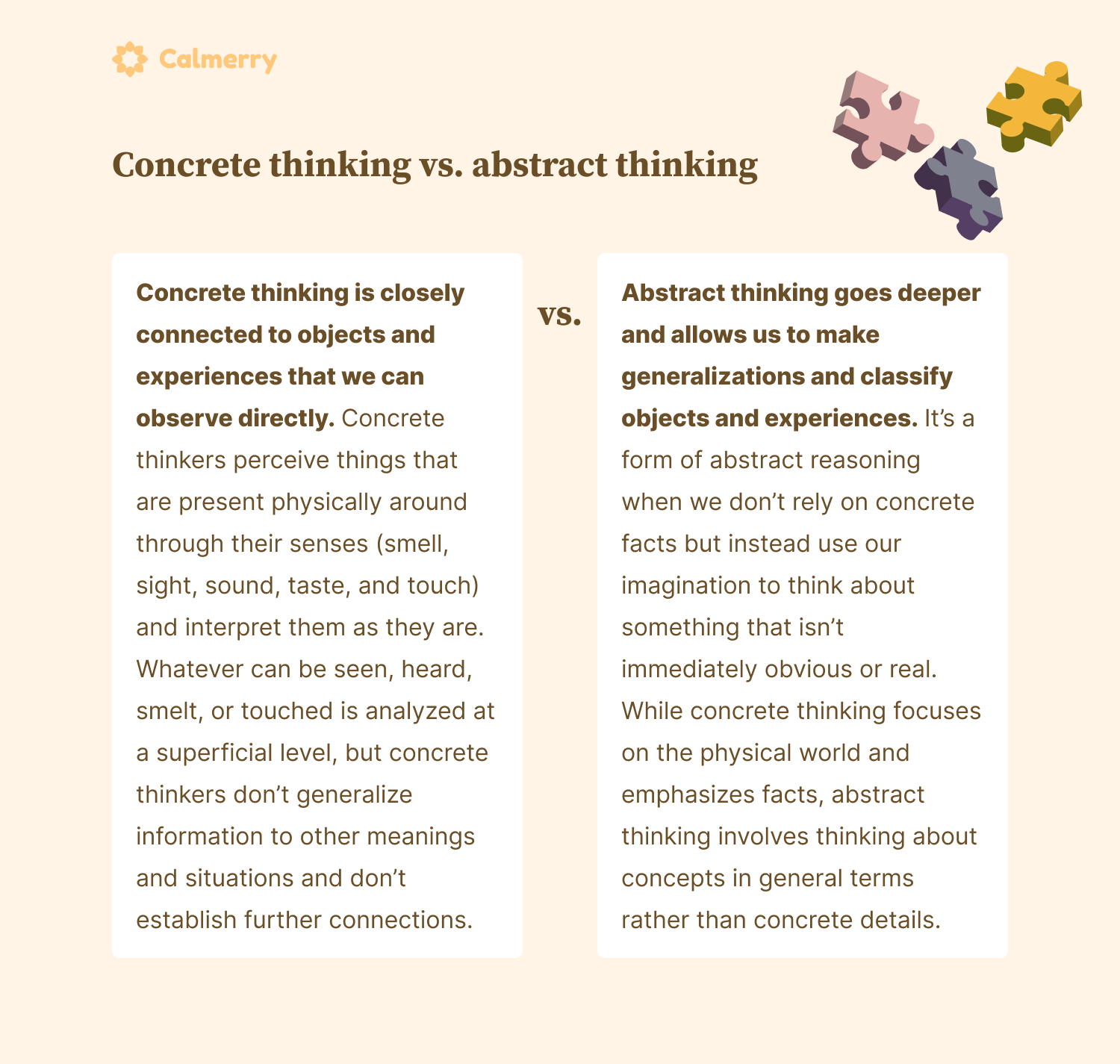abstract ideas vs concrete facts 2025
Related Articles: abstract ideas vs concrete facts 2025
- 2 Truths And A Lie: Innovative Ideas For The Workplace In 2025
- 100 Quick & Easy Healthy Dinner Ideas For 2025
- 60th Birthday Gift Ideas For 2025: Celebrate Six Decades Of Life
- 2 Truths And A Lie: Dirty 2025
- 60th Birthday Party Ideas For Men 2025: A Milestone Celebration
Introduction
With enthusiasm, let’s navigate through the intriguing topic related to abstract ideas vs concrete facts 2025. Let’s weave interesting information and offer fresh perspectives to the readers.
Table of Content
Video about abstract ideas vs concrete facts 2025
Abstract Ideas vs. Concrete Facts: Navigating the Cognitive Landscape in 2025

Introduction
In the rapidly evolving technological landscape of 2025, the distinction between abstract ideas and concrete facts becomes increasingly blurred. The proliferation of information and the interconnectedness of global networks challenge our ability to discern between the realm of the conceptual and the tangible. This article delves into the nature of abstract ideas and concrete facts, exploring their interplay and implications for human cognition in the digital age.
Abstract Ideas: The Realm of the Intangible
Abstract ideas are concepts that exist independent of physical reality. They represent mental constructs, beliefs, and emotions that cannot be directly observed or measured. Examples of abstract ideas include love, justice, freedom, and the concept of numbers. Abstract ideas are often expressed through language, symbols, or art, but they do not have a physical form.
The realm of abstract ideas is vast and multifaceted. It encompasses the entire range of human thought, from the mundane to the profound. Abstract ideas shape our understanding of the world, guide our decision-making, and inspire our creativity. They allow us to contemplate the abstract, transcend the boundaries of our immediate experiences, and connect with others on a deeper level.
Concrete Facts: The Foundation of Reality
Concrete facts, on the other hand, are verifiable, objective truths that can be directly observed or measured. They represent the tangible, physical world around us. Examples of concrete facts include the laws of physics, the existence of the Earth, and the fact that 2 + 2 equals 4. Concrete facts are often expressed through scientific data, empirical evidence, or common sense.
The realm of concrete facts provides a solid foundation for our understanding of the world. It allows us to predict and control our environment, make informed decisions, and communicate effectively. Concrete facts are essential for our survival and well-being. They anchor us in reality and help us navigate the complexities of the physical world.
The Interplay of Abstract Ideas and Concrete Facts
Abstract ideas and concrete facts are not mutually exclusive. They coexist and interact in a complex and dynamic relationship. Abstract ideas can be grounded in concrete facts, and concrete facts can be interpreted through the lens of abstract ideas.
For example, the abstract concept of justice can be realized through the concrete facts of laws and legal systems. Similarly, the concrete fact of climate change can be understood through the abstract idea of human responsibility for the environment.
The interplay between abstract ideas and concrete facts is essential for human cognition. It allows us to make sense of the world, connect with others, and make meaningful decisions. By understanding the nature of both abstract ideas and concrete facts, we can navigate the cognitive landscape of 2025 with greater clarity and discernment.
Implications for the Digital Age
In the digital age, the distinction between abstract ideas and concrete facts becomes increasingly blurred. The proliferation of information and the interconnectedness of global networks create an environment where abstract ideas can spread rapidly and concrete facts can be easily manipulated.
This poses challenges for our ability to discern between truth and falsehood, and to make informed decisions based on reliable information. It is essential to develop critical thinking skills and a healthy skepticism in order to navigate the digital landscape effectively.
Conclusion
Abstract ideas and concrete facts are two fundamental aspects of human cognition. They represent the intangible realm of thought and the tangible realm of reality. By understanding the nature of both abstract ideas and concrete facts, we can navigate the cognitive landscape of 2025 with greater clarity and discernment.
In the digital age, it is more important than ever to be aware of the interplay between abstract ideas and concrete facts. By critically evaluating information and seeking out reliable sources, we can empower ourselves to make informed decisions and navigate the complexities of the 21st century with confidence.
![[IMGSRCTITLE2]](https://www.choosingtherapy.com/wp-content/uploads/2022/11/Abstract-vs-Concrete-Thinking.png)
![[IMGSRCTITLE3]](https://newtontheteacher.weebly.com/uploads/9/3/1/9/93197650/abstract-vs-concrete_orig.jpg)
![[IMGSRCTITLE4]](https://prettysimplesara.com/wp-content/uploads/2020/09/Abstract-vs.-Concrete-Goals.png)
![[IMGTITLE5]](https://helpfulprofessor.com/wp-content/uploads/2023/01/abstract-thinking-examples-and-definition.jpg)
![[IMGTITLE6]](https://us.calmerry.com/wp-content/uploads/2020/11/concrete-thinkers-vs-abstract-thinkers-1024x410.png)
![[IMGTITLE7]](https://differencebtw.com/images/abstract-vs-concrete-14568.webp)
![[IMGTITLE8]](https://i.ytimg.com/vi/b4kglEScXOc/maxresdefault.jpg)
![[IMGTITLE9]](https://ecampusontario.pressbooks.pub/app/uploads/sites/3109/2023/02/Abstract-vs-Concrete.png)
Closure
Thus, we hope this article has provided valuable insights into abstract ideas vs concrete facts 2025. We thank you for taking the time to read this article. See you in our next article!